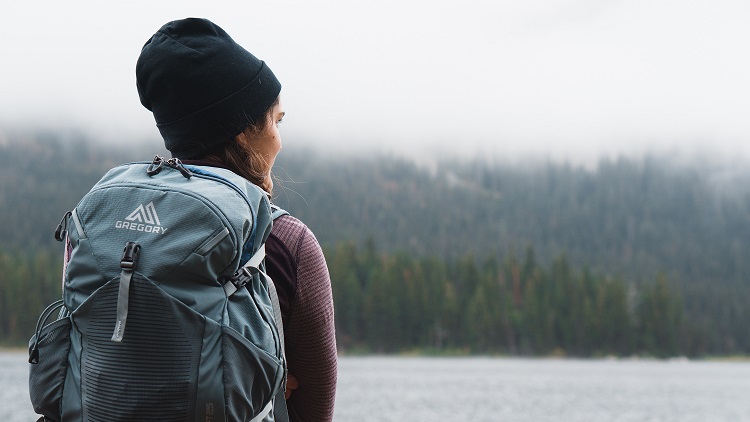It’s the difference between going on a week-long vacation and going on an afternoon picnic at the local park.
You put a lot of time and effort into prepping for the former, given commitments of time, money and labor involved. The latter is often more spur of the moment, or at least looked upon as a quick out and back adventure.
So it is with backpacking versus day hiking.
No backpacker worth his or her weight in freeze-dried meals heads out without checking their gear, and re-checking it, and re-checking it again. That’s understandable. Leave something at home and chances are they have to do without, for a long while if not the entirety of the trip.
But when it comes to going on a day hike, a lot of people just grab a store-bought bottle of water and head off.
That’s a mistake.
Getting injured, encountering bad weather, getting lost, those aren’t just things that happen on multi-day excursions. Every hiker – especially in these days, when search and rescue crews are overtaxed like never before – needs to take some responsibility for his or her own safety and well being.
That’s where the 10 essentials come in. They are 10 things every hiker should take into the woods every time he or she ventures out.
Here’s a look at what they are.
Navigation
A topographical map and compass is ideal, provided you know how to use them. If not, take a class and learn.
Even something like a state park map is better than nothing. It probably won’t be to scale, and won’t show things like elevations changes. But it will generally identify trail junctions, landmarks and what not.
Don’t rely primarily on your phone or GPS in place of these. Both have batteries that can run out, they can die if dropped in water or they just might not be able to get signal.
Sunscreen
Pack – and liberally use – sunscreen and lip balm. Wear a hat and sunglasses, too. And it’s not a bad idea to wear long-sleeved shorts and long pants.
Those not only offer protection from the sun, but ticks as well.
Extra clothes
This is really important at the edges of the season, like spring and fall, when there can be big swings in temperature from day to day or even hour to hour.
But don’t overlook this in summer either. It’s possible to get hypothermia even in warmer weather.
Throw a fleece jacket or wool sweater in your pack and – depending on the time of year – maybe some gloves or a warmer hat.
And don’t forget rain gear.
Light
It’s hard enough getting out of the woods when you’re turned around during daylight. It’s harder still to move about safely, or even find materials to build a fire for staying the night, if it’s dark and you can’t see.
Throw a headlamp or flashlight and some extra batteries in your pack. Make sure everyone else on the hike has one, as well.
Shelter
Speaking of spending an unexpected night in the woods, if it comes to that, you’ll want some way to protect yourself from the weather.
It’s all well and good to know how to build something like a debris hut. But if it’s already late, or the weather’s already bad, and it’s still a long way until morning, having something like a bivy sack, a space blanket or even a lightweight tarp can make a huge difference.
Fire starting tools
Redundancy is important here.
If you pack matches in your day pack, through in a lighter, too, or even a ferro rod that you have practiced with beforehand. That way, if the lighter fails or the matches get wet, you’ve got a backup.
Be sure to also carry some fire starting materials, be it something you bought in a store or made at home. Getting a fire started quickly restores confidence as well as providing warmth.
First aid kit
How big and varied this needs to be depends in part on the people in the hiking party. If they have special medical needs, be sure to pack medicines, an epipen or whatever else they require.
Beyond that, it pays to carry some basics. Adhesive bandages in assorted sizes are a given, as is some way to treat blisters, gauze pads, over the counter pain medications and a disinfecting ointment. Medical gloves aren’t a bad idea, either.
And be sure, upon getting back home, to immediately replace anything you used, before you forget.
Knife and tools
You don’t necessarily need a giant bushwhacking knife. Chances are you’re not going to be cutting your way back to civilization.
But carrying a pocket knife or a multi tool or both makes sense for a lot of reasons, from making fuzz sticks for fire starting to trimming bandages and more.
To that, add some tools you can use to make repairs in the field as necessary. A bit of duct tape is an obvious one. But parachute cord, zip ties, safety pins and caribiners can help, too.
Extra water
As a general rule, you almost always end up drinking – or needing to drink – more water than you expect. Figure on about a liter per person per hour, and maybe more if you’re really hoofing it along in tough conditions.
So when packing, take more water than you think you’ll need.
Or, since water is heavy, take along some method for treating water you encounter on your adventure. At a minimum, iodine tablets make water safe to drink, if sometimes less than tasty.
Extra food
Chances are you aren’t going to be lost so long that you resort to trapping chipmunks with homemade snares to survive.
But being hungry stinks. So add to your pack trail snacks – gorp, fruit snacks, fruit bars, jerky, summer sausage and bagels even – that don’t require cooking. And remember more is always better.
Being able to snack, aside from the caloric benefits, can take people’s minds off their troubles and boost morale, especially when it comes to kids.
Now, you may want to add additional things to your day pack, like a camera, binoculars, hand sanitizer, toilet paper and a trowel, dry socks or something else. Your own needs and trip can determine that.
But start with the 10 essentials and every outing can be a fun or at least safe, no matter what else happens.
Bob Frye is the Everybody Adventures editor. Reach him at (412) 216-0193 or bfrye@535mediallc.com. See other stories, blogs, videos and more at EverybodyAdventures.com.









































